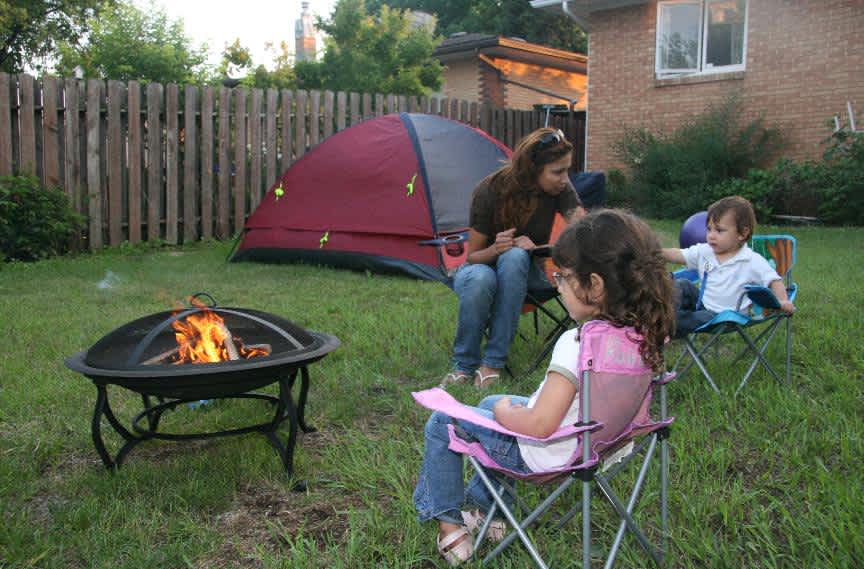Urban Camping Checklist: Getting Outdoors, or at Least Out in the Backyard
Andy and Tami McDaniels 10.19.12

Every camping trip I have ever been a part of involved loading the car full of camping gear and driving to a remote location in the country. Once our destination was reached, we set up camp. This usually included finding a suitable location for and erecting a tent. Camp activities included hiking in the woods, mountain climbing, fishing, and cooking over an open fire to name a few.
These days, a new kind of camping called urban camping is cropping up. As the name suggests, this type of camping involves spending a night or more in the outdoors in an urban environment. I know what you’re thinking: “urban camping” is an oxymoron. The words are mutually exclusive–the term urban conjures images of work, congestion and stress; camping, conversely, conjures images of play, open spaces, and relaxation. How then can urban camping be acceptable?
A quick drive to your local gas station provides the answer to this question. The cost of a gallon of gas ranges from $3.45 in Oklahoma to $4.56 in California. Groceries are at an all-time high. Many people are unemployed or under-employed, and they can’t afford to travel. However, the lure of the outdoors is too powerful to resist. Tourists, students and professionals are making camp on rooftops, under bushes, and in public parks. Intrigued? Before venturing out into the urban wilderness, special consideration should be given to location and gear for a safe and legal experience.
Location, location, location. Where will your urban camping adventure take place? If expenses are really tight, your own backyard could be the ideal spot. Backyard camping isn’t just for kids. Each year, thousands of Americans participate in the Great American Backyard Campout, a one-night event hosted by the National Wildlife Federation that provides an opportunity for all generations to open their doors and sleep out under the stars. If you live in an apartment complex, talk to the management about a rooftop excursion. Much support has been given to rooftop gardening, why not rooftop camping? Camping on the roof may pose a liability problem, but managers want happy tenants, so if the rooftop is out of the question, go for a compromise like a community campout in the parking lot.
If you plan to venture out of your own dwelling area and deeper into the urban wilderness–say a public park or a vacant lot–you will need to be cognizant of city ordinances. Be prepared; ordinances will be an issue, but they can be changed. Form a coalition of like-minded campers, put together a plan of action, and then talk to your local city council members to have restrictions lifted. Keep an open mind and be willing to compromise. The ultimate goal is for you to enjoy an outdoor experience without having to travel far for the pleasure.
After the location has been determined, you can decide on what type of gear you will need. Will you sleep in a car, a van, a tent or out in the open? What will you eat? How will you prepare and store your food? Are restroom facilities available for your use? What will the weather be like? What dangers should you be aware of? Is the area well-lit? All of these questions will help you determine the proper equipment to bring. Regardless of where you are–the Colorado Rockies or a vacant lot in Anywhere, USA–you need shelter, heat, water, food, and a means of obtaining help in the event of an emergency. Creating a checklist based on the above questions and categories will ensure that you plan for and include the proper camping equipment.
Once you have chosen an appropriate location and suitable gear, you are on your way to having a safe and legal urban camping experience. Your next camping trip is, literally, just around the corner. Whether your adventure takes place on a rooftop, under bushes, in your backyard, or in a public park, your need to connect with the outdoors will be fulfilled and your pocketbook will still be intact. Happy camping!

